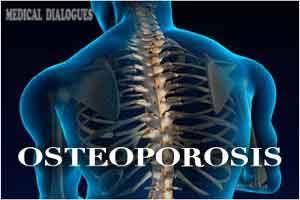- Home
- Editorial
- News
- Practice Guidelines
- Anesthesiology Guidelines
- Cancer Guidelines
- Cardiac Sciences Guidelines
- Critical Care Guidelines
- Dentistry Guidelines
- Dermatology Guidelines
- Diabetes and Endo Guidelines
- Diagnostics Guidelines
- ENT Guidelines
- Featured Practice Guidelines
- Gastroenterology Guidelines
- Geriatrics Guidelines
- Medicine Guidelines
- Nephrology Guidelines
- Neurosciences Guidelines
- Obs and Gynae Guidelines
- Ophthalmology Guidelines
- Orthopaedics Guidelines
- Paediatrics Guidelines
- Psychiatry Guidelines
- Pulmonology Guidelines
- Radiology Guidelines
- Surgery Guidelines
- Urology Guidelines
Denosumab superior to bisphosphonates in osteoporosis

A new study published in JCEM has reported that denosumab effectively increased bone mass in patients with low bone mineral density(BMD) or osteoporosis more than any bisphosphonate therapy.
Denosumab is a human monoclonal antibody for the treatment of osteoporosis, treatment-induced bone loss, metastases to bone, and giant cell tumour of bone.
The meta-analysis included data from 10 randomized controlled trials with durations of at least 12 months conducted between 2006 and 2018, assessing adults with either osteoporosis or low BMD . The study participants had a mean age of 63 to 78 years, and 99% of the participants were women.
In a similar study published in the journal Blood Advances, Medical Dialogues has earlier reported that for patients with osteoporosis caused by transfusion-dependent thalassemia (TDT), a twice-yearly injection appears to improve spinal bone mineral density.
Read Also: Denosumab superior to bisphosphonates for osteoporosis in TDT
Participants received 60 mg subcutaneous denosumab once every 6 months for at least 12 months (intervention group) or a bisphosphonate treatment (comparator group), including alendronate, ibandronate, risedronate or zoledronic acid. Primary outcomes were mean percentage change in BMD at the lumbar spine, total hip and femoral neck at 12 months. Secondary outcomes included mean percentage change in BMD at the lumbar spine, total hip and femoral neck at 24 months, an overall incidence of vertebral fractures and the overall incidence of nonvertebral fractures at 12 and 24 months, along with any adverse events.
The investigators analyzed that compared with all bisphosphonates, incremental 12-month increase in BMD with denosumab was greater by 1.42% at the lumbar spine, 1.11% at the total hip and 1% at the femoral neck.
After removing five studies with participants with osteopenia, the mean BMD increase difference between treatments was 1.47% at the lumbar spine, 1.04% at the total hip and 0.97% at the femoral neck.
In subgroup analyses based on specific bisphosphonate treatments, researchers found that denosumab increased BMD more than each of the three oral bisphosphonates at all sites; however, denosumab only demonstrated superiority at the total hip and femoral neck sites when compared with zoledronic acid.
The researchers found that in two trials reporting changes in BMD at 24 months, pooled results showed the BMD increase the difference between treatments was 1.74% at the spine, 1.22% at the total hip and 1.19% at the femoral neck.
Read Also: Mediterranean Diet good for people with osteoporosis
While analyzing the fracture risk, researchers did not observe a difference between denosumab and bisphosphonate treatments for reducing the risk for any type of fracture in pooled estimates at 12 months or at 24 months or for osteoporotic fractures specifically at 12 months. Only one study demonstrated denosumab had a lower osteoporotic fracture incidence than alendronate at 24 months. Safety profiles were similar between treatments.
According to the study author Houchen Lyu, the analysis has provided moderately strong evidence that denosumab is more effective at increasing BMD at all relevant anatomical sites vs. bisphosphonates and safety profiles between denosumab and bisphosphonates were found to be similar.
The study concluded that patients treated with a prior bisphosphonate, switching to denosumab would result in a greater increase of BMD than a switch to another bisphosphonate.
For full information log on to https://doi.org/10.1210/jc.2018-02236

Disclaimer: This site is primarily intended for healthcare professionals. Any content/information on this website does not replace the advice of medical and/or health professionals and should not be construed as medical/diagnostic advice/endorsement or prescription. Use of this site is subject to our terms of use, privacy policy, advertisement policy. © 2020 Minerva Medical Treatment Pvt Ltd